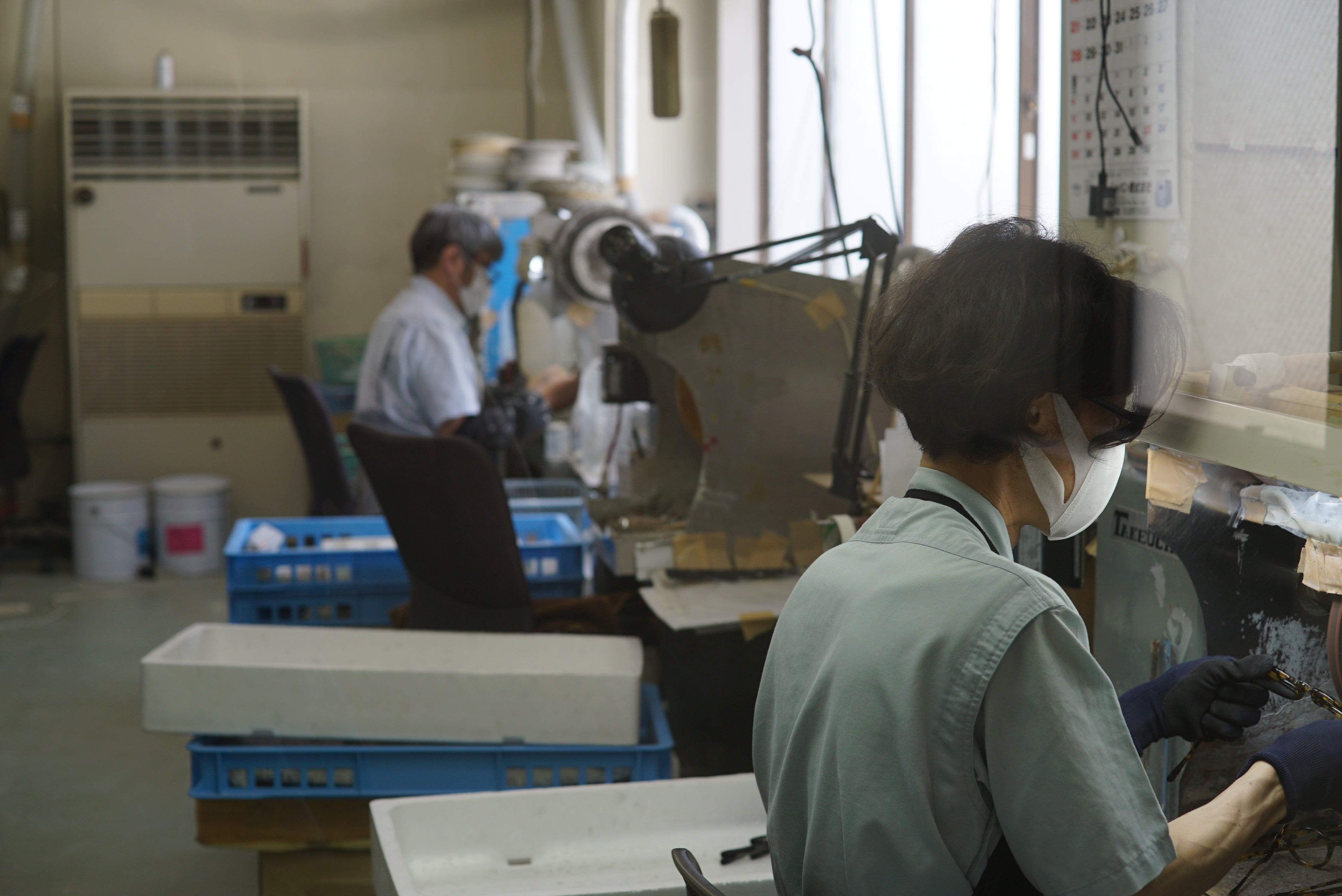
Eyewear including Sasaki Celluloid Works’ house brands is carefully polished by skilled craftsmen. Today, we introduce our proud "MIGAKI (polishing)" process.
There are two main ways to make so-called "plastic glasses." One is called resin-made, where melted plastic is poured into a machine mold and produced on a belt conveyor system. This method is inexpensive and suitable for mass production. In contrast, glasses made in Sabae, Japan, are individually carved, polished, and hand-assembled from sheets for each part such as the front frame, temples, and nose pads, using hinges. It takes200These processes must be completed. While glasses produced by belt conveyor systems are "industrial products," glasses made in Sabae can be described as "craft products," which might be easier to understand.
At Sasaki Celluloid Works, acetate and celluloid are mainly used as materials for glasses. Acetate accounts for 95% of the factory’s production volume, and celluloid about 5%. It takes about half a year to shape a single pair of glasses from a sheet. Most of that time is spent on the "MIGAKI" (polishing) process.
Let's take a closer look at the polishing process. Polishing is broadly divided into two processes: "galan polishing" and "buff polishing." The former is a process where a machine runs for dozens of hours to smooth the edges of the glasses. This process gives the glasses a natural roundness and makes them more resistant to scratches. There are actually different types of galan, with a total of "rough galan," "intermediate galan," and "finishing galan."3times, respectively20for about that much time each. Different bamboo chips and polishing agents are used depending on the type of galan, and adjusting the amount of chips and polishing agents used is also the craftsman’s job. Since the machine is operated with fine adjustments, experienced craftsmen with many years of experience are in charge of this part.


The buff polishing process comes in during the galan polishing. Buff polishing also uses "rough buff," "intermediate buff," and "finishing buff"3there is a process, and this is100% is done by craftsmen’s handwork. Different buffs and polishing agents are used for rough, intermediate, and finishing polishing. In fact, of Sasaki Celluloid’s handwork,80% of the time is spent on this polishing process.

When you hear "polishing," you might think it’s done after one polish, but actually6The polishing process uses the most hands and time of the craftsmen.
Sasaki Celluloid Works' house brands, "SASAKI" and "sasaki celluloid," are no exception, carefully polished by skilled craftsmen. We hope many people will pick them up and wear them on their faces to experience the smoothness of their surfaces. They are exquisite pieces.
Now, next week is finally the eyeglass festival Silmo in Paris, France.2023It will be held! This is the first exhibition for Sasaki Celluloid Works. Please look forward to the on-site report!
